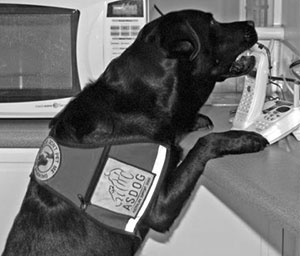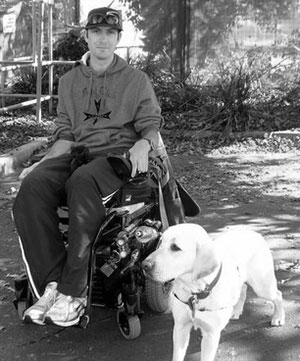Who is eligible for an assistance dog?
Generally speaking, any person over 18 years with a physical disability who is able to effectively communicate with, competently instruct and take part in caring for a dog is eligible.
What breeds are used for assistance dogs?
Labradors and Golden Retrievers are used by Australian Support Dogs Inc. These breeds are calm, intelligent, and eager to please.
Can you train my pet dog to be an assistance dog?
ASDOG does not train dogs from outside of their puppy raising and advanced skills training programs.
What tasks can an assistance dog do?
Trained dogs are able to perform many tasks including:
- opening and closing cupboards, doors and refrigerators
- picking up dropped items
- retrieving items from tables, cupboards, drawers and people
- loading and unloading frontloading washing machines
- carrying baskets
- removing clothing e.g. jackets, socks, slippers
- pulling a basket on wheels
- taking a cordless phone to its owner
- opening and closing wheelchair footplates
- adjusting blankets and doonas
How much recipient training is required?
Three or four preliminary socialisation meetings are followed by a three week course for the new team. This encompasses:
- task training in the home, work, social and recreational environments; and
- public access training in shops, restaurants and on public transport.
The team will then undergo some follow up training meetings and a Public Access Test.
Where is an assistance dog allowed to go?
Government legislation permits an accredited team entry to any public place. However, quarantine areas such as Taronga Zoo forbid entry to any animal.
How much does an assistance dog cost?
Assistance dogs are provided to the recipient free of charge. All costs subsequent to custodianship become the responsibility of the recipient.
Do Assistance Dogs ever get to be just dogs and play?
Yes. They need downtime and fun just like other dogs. Work time has to be balanced with rest time. Recipients are required to provide daily on and off leash exercise.
Can there be other dogs living in the house?
In order for the assistance dog to focus on the recipient’s needs, and to establish and maintain a close bond with its owner, it is preferable that there be no other dogs in the household under 10 years of age.


